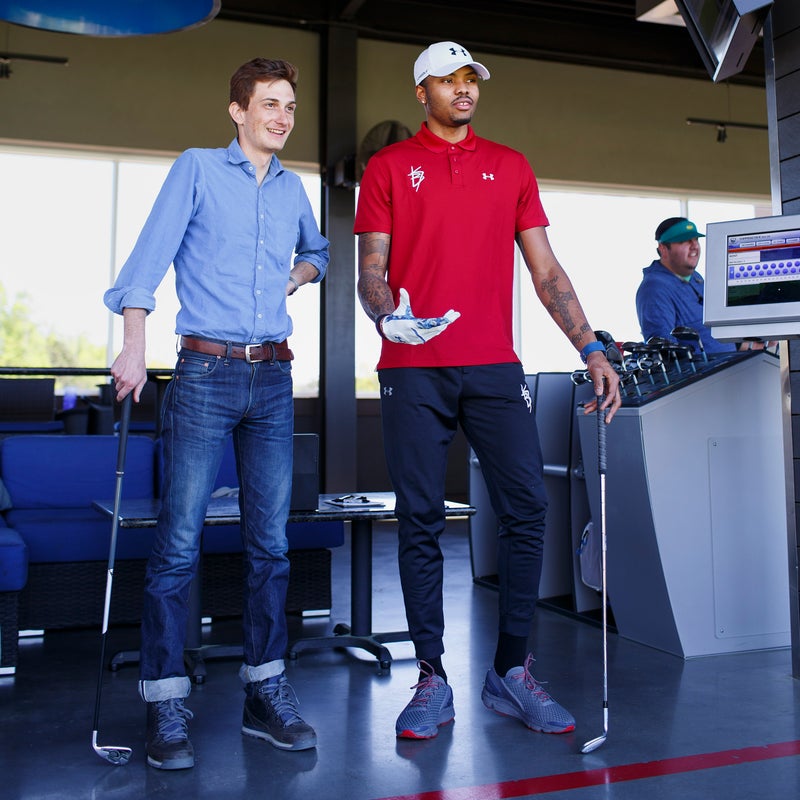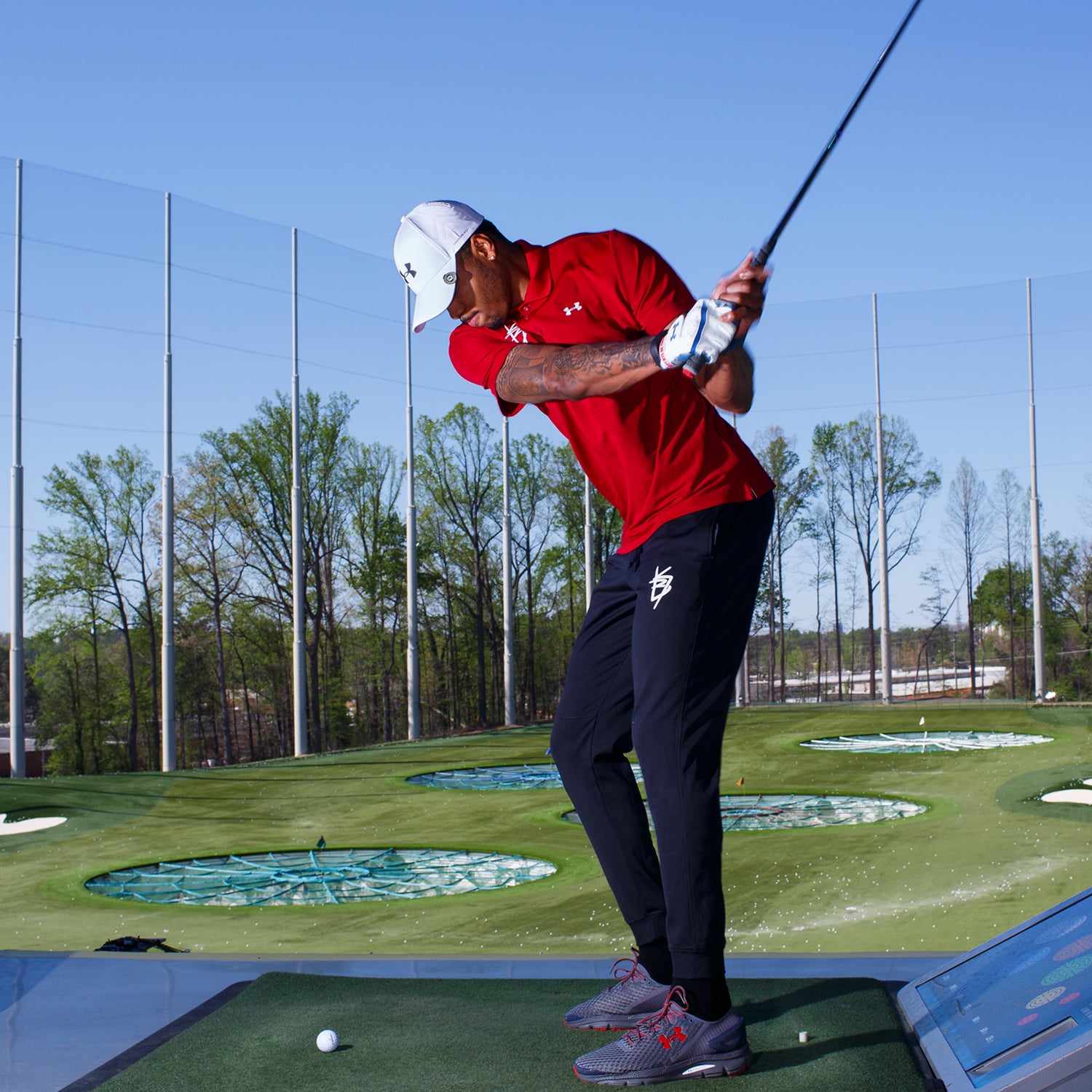On a warm, clear Sunday afternoon┬álast April, Atlanta Hawks swing man stepped up to a turf-┬şcovered platform brandishing a five-iron. With Pitbull blaring in the background,┬áBazemore set his feet and purposefully unwound his six-foot-five frame to send a perfect shot downrange. ÔÇťBest ball of the day,ÔÇŁ he said, stepping back to admire the┬áarc as it dropped, nearly 200 yards away, into a 15-foot-wide, spider-web-shaped target. As groups of golfers on either side of him plowed through pitchers of beer, a nearby screen flashed congratulations and awarded Bazemore nine points.
Clearly, this is not your grandfatherÔÇÖs good walk spoiledÔÇöitÔÇÖs the Midtown ┬şAtlanta site of , which has 23 locations across the country. The company transported the driving range into a three-story building, ditched the dress code, and added free-flowing drinks, hundreds of TVs, and pounding music.
Topgolf was invented in 2000 in England by twin brothers Steve and Dave Jolliffe, who were bored stiff with the usual bucket-of-balls approach to perfecting their golf swing. So they created an experience that was more like a video game. They equipped the balls with electronic tags, similar to a ┬şmarathonerÔÇÖs timing chip, and devised a point system based on shot distance and ┬şaccuracy. When the ball hits one of the targets on the 215-yard range, sensors scan it and the score is added to a running tally.

The company opened its first U.S. ┬şlocation in Virginia in 2005 and has since brought on investors including Callaway. Topgolf has done something that ┬ştraditional golf, as Topgolf ┬şemployees call it, has struggled to do: attract new players, particularly young ones. This yearÔÇÖs Tiger-less Masters saw an 11 percent decline in final-round TV viewer┬şship, and according to the National Golf Foundation, course closures have outpaced openings for eight years running. Despite the ascendance of fresh faces like Jordan Spieth and Rory McIlroy, the game is especially ┬şunpopular with young peopleÔÇö┬şparticipation by those between 18 and 30 has declined 35 percent since 2006.┬á
A fluky couple of bounces had me leading ┬şBazemore┬áafter the first round.┬áThen he busted out a fairway wood and the drubbing began.
Of the 13 million people expected to visit Topgolf this year, more than two-thirds are under 35, according to company statistics. Half have never played before. The other half arenÔÇÖt your typical white country clubbers, either. Though the company doesnÔÇÖt track such data, the visitors I saw were more racially ┬şdiverse and included more women than the local links. ItÔÇÖs not hard to see why: with greens fees at some courses reaching well over $100 per person for 18 holes, ┬ştraditional golf is expensive and stuffy. Topgolf costs between $20 and $40 an hour for your ┬şentire group, and on Fridays and Saturdays the place is usually packed late into the night. (ItÔÇÖs open until 2 A.M. on weekends.)┬á
It doesnÔÇÖt hurt that Topgolf has caught on with celebrities. Rapper Rick Ross recently posted a clip of himself on Snapchat taking some truly ugly swings. And last February, I that Bazemore had been hitting balls with his former Warriors teammates, including reigning back-to-back MVP Stephen Curry. So I asked him if he wanted to play.┬á
The 26-year-old picked up the game two years ago, he told me, and has since become a Topgolf regular. I hadnÔÇÖt swung a golf club in a decade before the weekend we met in ┬şAtlanta, and I immediately sliced a ball straight into the side netting. Zero points. Bazemore, who over the past four seasons went from an undrafted rookie who couldnÔÇÖt score to a sought-after free agent by working obsessively on his shot, has applied the same sort of effort to his golf form. He didnÔÇÖt like what he was seeing of mine. ÔÇťTuck your front shoulder in,ÔÇŁ he instructed. Slice. ÔÇťBut without moving your front foot.ÔÇŁ At one point, Bazemore produced a pointer from his bag to indicate my many flaws.
After some practice cuts, it was game on. A fluky couple of bounces had me leading ┬şafter the first round. ÔÇťYouÔÇÖre going to regret all those pointers you gave me,ÔÇŁ I said. Then he busted out a fairway wood and the drubbing began. Afterward, shockingly sore but hooked, I Googled the Topgolf nearest my home in Santa Fe.┬á
The good news: an Albuquerque spot may be in the works, and thereÔÇÖs further ┬şexpansion planned. In 2013, Topgolf was in nine cities around the country. The ┬şcompany aims to have 50 locations in the next three years. As communications chief Adrienne Chance says, ÔÇťWeÔÇÖre looking forward to ┬şgrowing not only Topgolf, but the game of golf ┬şitself.ÔÇŁ


